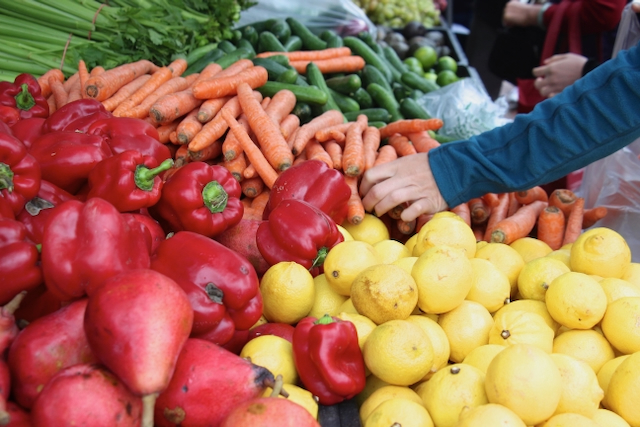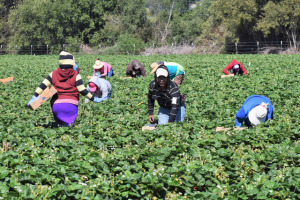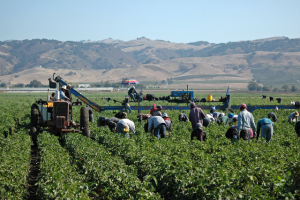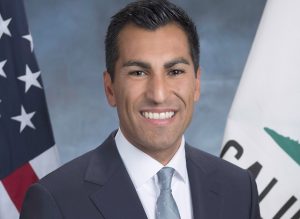
Why I am Optimistic About Our Future
August 23, 2023 Michael R. DimockAs I look back over the last 30 years of the good food movement I am convinced that I have seen more advances or victories since 2019 than in all the years preceding it. This is why I remain an optimist about our future. The transformation is underway at an accelerating pace.
I believe that where the food system goes all systems underlying civilization will eventually go too because the food system is the base system for any human society. In fact, a food system is the bases for the existence of any and all living species. Whether bacteria or human, all species organize themselves to maximize their access to sustenance. I believe this so deeply I am writing a book about it, but more on that another time.
The pattern of our food system has greatly shaped other systems utilized by our species. Think about energy, water, medical, economic and governance; all are deeply connected and influenced in their structures and services by the food system. Among the greatest foci in health care is treatment of Type 2 Diabetes, a diet related disease. 80% of fresh water is delivered to agriculture. The food system alone accounts for 30% of all the energy humans consume in a year. This is because fossil fuel is the power source behind most fertilizer, all the machinery in the field, processing plants and distribution centers. Oil is a key ingredient in the many chemicals used in agriculture.
Then there is governance. The Farm Bill’s largest component is nutrition benefits, about $75 billion per year. This is considered mandatory spending built into the nation’s annual budget. And we must not forget, many of the Constitution’s framers and eight of the nation’s first twelve presidents were made wealthy by agriculture and enslaved thousands of Africans. They encoded into our social structure and economy a mindset that remains largely intact within our economy. It is the idea of exploiting the resources and labor for maximum profit above all else. Luckily, that mindset is being powerfully challenged and is slowly giving way to a new view, one that says the food system is the foundation of human and ecological health and it must be made healthy, resilient and just to protect and enhance humanity’s future.
I want to share the evidence I see that the food system is changing. I’ll begin with the fact that agriculture (that is production of food and fiber from the land) is embracing the complexity of nature and the need for ecological, economic diversity and respect and care for the workforce.
And I will go further and say that despite the hateful and often violent resistance from those who want to look back to a simpler time when white supremacy and patriarchy were acceptable, the societal complexity and diversity that comes with ethnic, racial and gender equality is slowly being embraced by the mainstream of a large proportion of the this nation and that trend can be found in food system changes made by both the public and private sectors.
Some simple examples of more justice in food systems are that in the last five years farmworkers have gained access to overtime and higher minimum wages here in California, something long denied. Some of you may have recently seen that meat processing corporations in the Midwest got busted and fined for violating child labor laws. Here in the California farm labor contractors and those who hire them are getting hammered for violating worker rights to lodge complaints of abuse and at the same time the ag industry in places like Ventura and Sonoma County are working to protect workers from heat and the lost wages due to heat, smoke and other extreme disruptions. I see more empathy for the plight of workers emerging, particularly in California.
Although government is the among the hardest institutions to change, the momentum in policy victories is increasing across the nation related to food access. We now have hundreds of millions in funding for nutrition incentives, school food, food banks and more. Efforts to expand local and regional infrastructure improvements; reductions in pollution, toxics use and exposure, and organic and regenerative farming are all being resourced by improvement in policy.
Let me get specific. When it comes to economic diversification interesting things are certainly underway. USDA Secretary Tom Vilsack stated in June 2021 that the nation has gone too far in pursing efficiency by concentration of food processing. He and the nation are now committed to creating food supply chain resilience by investing in diverse scales of processing plants to aid mid and small-scale producers. This will provide better access to markets and revenue. Then in January of this year before the Senate Agriculture Committee began work on the next Farm Bill, Vilsack declared that USDA is dedicated to “transformation” of the food system by increasing diversity of scales, expanding climate smart agriculture and bring more equity for black, brown and indigenous farmers and ranchers.
His words are backed by local, state and federal government investments in food system resilience at a scale not seen since the Dust Bowl and Great Depression. Unleashed by the pandemic, the federal government has invested approximately $100 billion additional funding into the USDA beyond the 2018 Farm Bill baseline funding. A bit of research indicated the following flows: Coronavirus Aid, Relief, and Economic Security (CARES) Act, $49.5 billion, American Rescue Plan (ARP), around $40 billion and the Inflation Reduction Act (IRA), $19.5 billion. Much of that was for food security enhancement through SNAP and other nutrition programs including urban agriculture, but a large portion has flowed to local and regional food system infrastructure and conservation programs. This includes the $3.1B flowing to the 141 Climate Smart Commodities Partnership projects designed to move our agricultural producers into a new paradigm aiming for soil building, carbon capture, water capture and efficiency and corollary ecosystem services. You can read about Roots of Change’s participation in one of those grants in our August 2023 newsletter.
The CARES and ARP Acts also included direct grants to cities, counties and states. Impactful portions of those funds have been aimed at local and regional food systems. For example, in Los Angeles County at least $40 million from those two sources have flowed to low income families as nutrition benefits or incentives for purchasing fresh fruits and vegetables from small farmers selling through farmers markets in the county. Similar programs are found all across the nation.
A quick review of the cities that now possess urban agriculture offices or the equivalent is impressive. In a five minute Google search I found them in San Francisco, New York, Chicago, Cincinnati and Kansas City. Like California many states including Texas and New York have state-funded urban agriculture programs. The USDA’s Urban Agriculture Programs and these local and state programs are essential to increasing the ubiquity of robust urban agriculture sites.
Importantly, by 2021, 20 of the nation’s states had enacted some kind of healthy soils program as California has done. Between federal and state investments, incentives payments to farmers and ranchers to build healthy soil is certainly over $3.2 billion and growing.
California is a leader setting an example. As I have highlighted in past episodes, the Legislature with backing from Governor Newsom has invested $3 billion in healthy and resilient food system over the last two state budgets. The Legislature is now considering a request for nearly $4 billion in bond funding for farmworker housing, healthy food access, infrastructure and climate smart farming. The Food and Farm Resilience Coalition, of which ROC is a member, seeks to have the bond placed before the voters in 2024. So far, the Legislature is saying yes with no opposition from the Governor. If voters pass the bond it will be another indicator of what I see happening in the wider culture of the nation as reflected in markets.
My optimism is buoyed by the fact that the marketplace includes increasing numbers of awakened consumers. They are helping to drive change. Back in 1988 when I first became engaged in all this, colleagues and I along with farmers and ranchers across the political spectrum complained that consumers knew almost nothing about agriculture or the food system except that they wanted food to be cheap and fast. We all called for more agriculture and food literacy.
The Slow Food Movement, the organic movement, the healthy food movement and the food justice movement along with increased attention from the news media and entertainment industry have fostered and are shaping the collective consciousness of our nation and the industrialized world about food and farming. There are new books, documentaries, feature films and news stories about farms, ranches and the planet every day. Think about the award-winning documentary film The Biggest Little Farm from 2018 or last year’s The Menu with Ralph Fiennes or the Taylor Sheridan series Yellowstone, which is finding a welcome alignment between conservative ranchers and progressive’s calling for economic and justice environmental stewardship. And this year a new documentary, Common Ground, will feature regenerative farming.
Big companies see this entertainment and media coverage and consumer desires and are requiring their largest farms and ranch suppliers to embrace environmental farming and better labor practices. The critical development is that industrial food manufacturing corporations like Unilever, Danone, General Mills and Mars, to name a few, want their agricultural sources to become very acute observers of the biology. They want deeper data gathering and metric tracking about what is happening in their farming operations. This careful and precise engagement provides the insights farmers and ranchers need to align or work with nature.
I know from seeing it with my own eyes that our farmers and ranchers can become solutions to ecological, climate and labor challenges. They do it when they combine a dose of empathy with an ability to see their land in the way indigenous people have done for millennia. Their efforts are hugely enhanced when they use modern social and physical sciences to extend perception of what the land and people need at any given moment to regenerate resources while simultaneously feeding all the human, plant, fungal and animal species dependent on and contributing back to that land. Our farmer and ranchers become part of a virtuous cycle that enhances life when they do these things. More and more are doing it and an entire industry of science and tech-based enterprises are supporting this transition within agriculture. I invite you to do a Google search: type in Pasture Map or SnapLands, Indigo Ag or Point Blue Conservation Science and you will see what I mean.
Then there are farm to table restaurants, which promote local and regional farmers and ranchers who demonstrate such care for the land and people; they are everywhere. You find them in big cities and even small towns, in urban, suburban and rural settings. Locally and regionally owned grocers distinguish themselves by promoting their local sourcing. We recently heard at our regional Regenerative Meat Summit in Sacramento that one of UCLA’s most popular on campus restaurants is one that focuses on local, healthy and regenerative ingredients. Students on campuses all over the world are demanding products that don’t harm the climate and environment and contribute to good health. I just spoke just yesterday with a George, a recent graduate in business from the University of Washington. He wants to move into a career related to regenerative agriculture because he wants to address climate change, which is obviously the biggest threat to his future.
Grassfed meat is the fastest growing segment of the beef industry, a sector that is actually mostly contracting in the US and Western Europe. Grassfed is healthier for your body and the planet and people are catching on. And we know that the natural food sector continues to expand faster than conventional grocery. Also, and this very interesting and encouraging to me because it reveals real market sophistication: the mythologies around alternative and cell-grown meats are being exposed and discussed. Their truly industrial nature and their separation from the natural system are being questioned and all that venture capital money invested in the alternate meat sector is looking more and more like a bad bet. So, consumers and those who inform them are really awakening to the nuances required to fuel expansion of a healthy and resilient food system by driving market demand.
That demand, partially motivated by increasing climate impacts and long-standing health concerns, is shaping how the emerging generation of farmers and ranchers is plotting its future. Our regenerative meat work reveals it clearly. Those taking over their multigenerational ranches are the majority of the participants. Check out our report on our June Summit meeting and you’ll see it reflected in what we heard from the fifty ranchers in the room.
And of course, being on the land, farmers and ranchers are seeing the impacts of climate change more intimately than most people who live in urban settings. Heat, drought, fire, flood, tornado, hurricanes, all the extreme events caused by climate disruption, are inspiring a new approach for many of those who produce our food. This is a moment of flux that is pointing to the long-held principles and practices called for by those in the good food movement.
I put my faith in the human desire to survive and thrive. I believe as the world continues to heat the momentum of change will accelerate. I believe we will make the big transformation in the food and farming system and it will change all the other systems beneath civilization. I believe because I see it emerging.
ARP, CARES, Common Ground, Common Ground documentary, farm bill, Food and Farm Resilience Coalition, food systems, good food movement, grassfed meat, Indigo Ag, IRA, Pasture Map, Point Blue Conservation Science, Senate Agriculture Committee, Slow Food Movement, Snaplands, transformation, Vilsack



